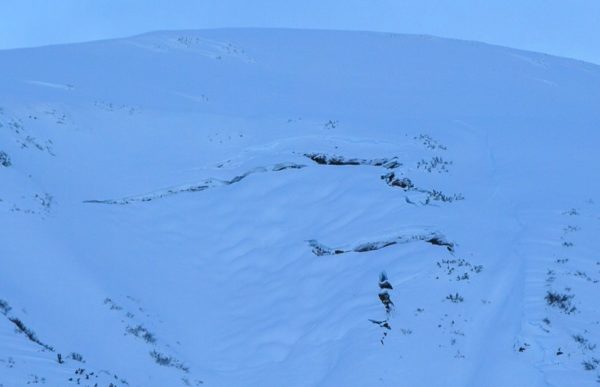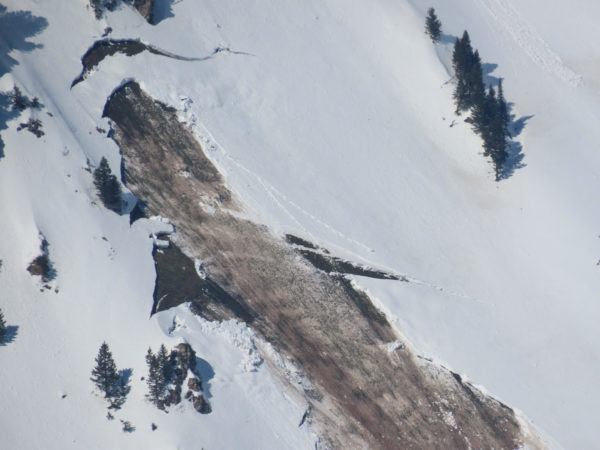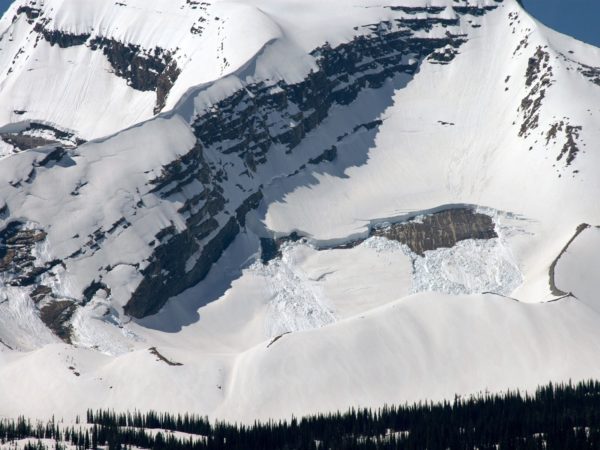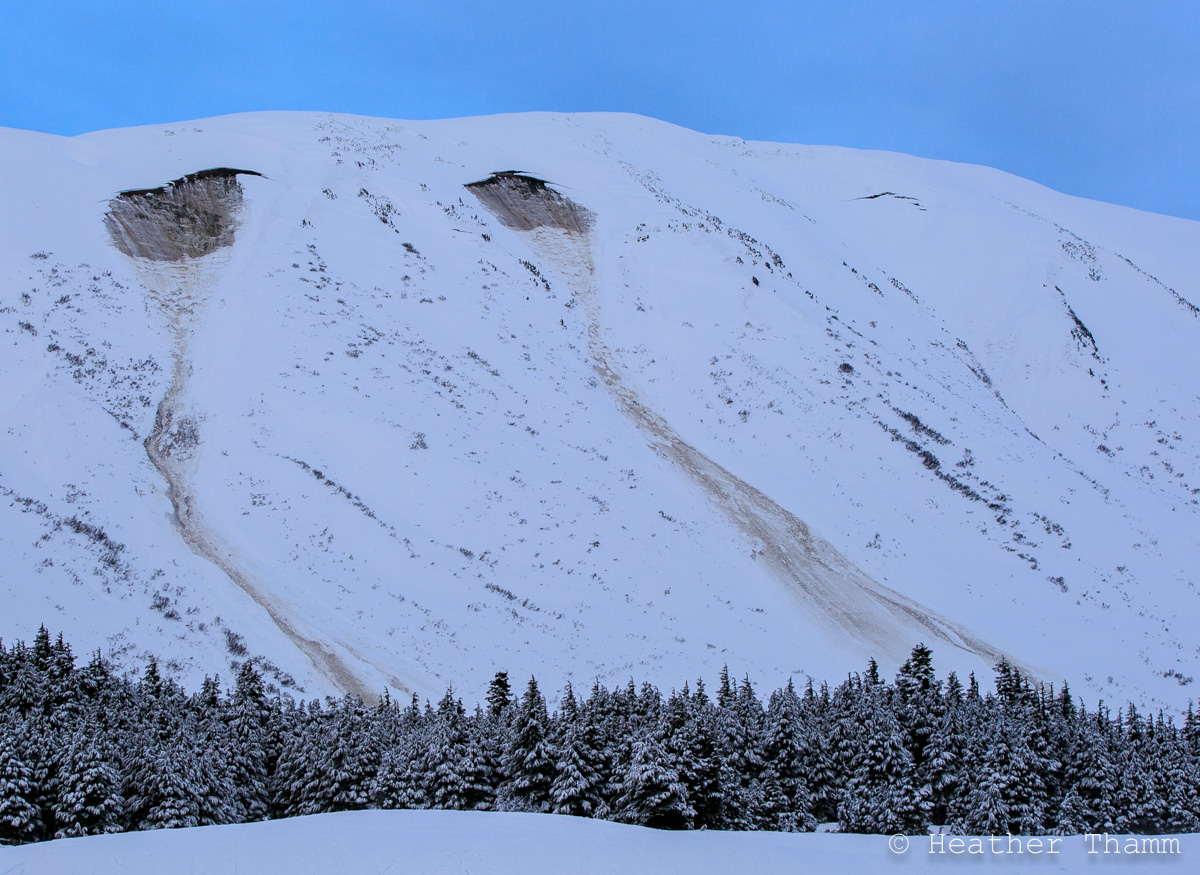Release of the entire snow cover as a result of gliding over the ground.
Glide Avalanches can be composed of wet, moist, or almost entirely dry snow, and can release under warm regimes and cold regimes. They occur on very specific slopes where the ground surface is relatively smooth, such as slick bedrock or grassy slopes. Glide Avalanches are often preceded by full depth cracks (glide cracks) that are visible across the slope, though the time between the appearance of a crack and an avalanche can vary between seconds and months. Glide avalanches are unlikely to be triggered by a person, but natural failures are very challenging to predict. Because Glide Avalanches only occur on very specific slopes, safe travel relies on identifying and avoiding those slopes. Open glide cracks are a significant indicator, especially cracks that have opened recently, as are recent Glide Avalanches.

Glide Cracks are common precursors to Glide Avalanches. Because the release of Glide Avalanches is nearly impossible to predict, it’s best to avoid traveling below slopes with visible glide cracks. Credit: Chugach National Forest Avalanche Center.

Glide Avalanches fail where the underlying ground is smooth, typically on grassy slopes (shown here) or on slick bedrock. Credit: West Central Montana Avalanche Center

Glide Avalanches often recur on very specific slopes. These Glide Avalanches released in the late spring from meltwater lubricating the base of the snowpack and underlying bedrock. Credit: Flathead Avalanche Center

Glide avalanches are not exclusive to spring melt season. Glides can also release during the beginning of the season or in the middle of the winter in some cases. Credit: Chugach National Forest Avalanche Information Center.

